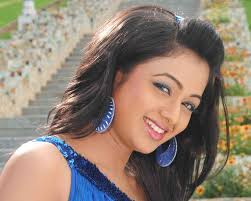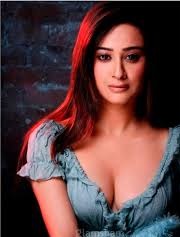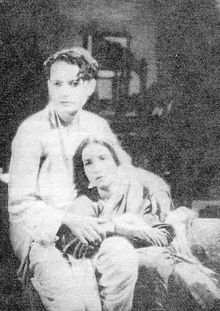Pramathesh Barua Pic images with whatsapp number and contact address
Get Details

24 October 1903
Gauripur, North-East Frontier, British India
Calcutta, West Bengal, India
Madhuri Lata
Amalabala
Contents
Early life
Barua was the son of the Zamindar of Gauripur, Assam, where he was born and spent his childhood. He studied at Hare School, Calcutta and then Bachelor of Science graduated from Presidency College, Calcutta in 1924. At the age of only 18, while still studying in college, he got married. It was arranged by the family. He had two more marriages. His third wife was film actress Jamuna Barua. After his graduation, he travelled to Europe, where he received his first exposure to films. After returning, he served for a time in the Assam Legislative Assembly and joined the Swaraj Party but ultimately moved to Calcutta and later began a career in films, much to the chagrin of his father.
Career
Pramathesh Barua’s stepping into the world of films was accidental. He was introduced to Dhirendranath Ganguly during his stay in Shantiniketan. Pramathesh Barua started his film career in 1926 as a member of British Dominion Films Ltd. In 1929, he appeared for the first time on the silver screen in a film named Panchashar which was directed by Debaki Kumar Bose. He also acted in Takay Ki Na Hay, another film directed by Dhiren Ganguly.
Around this time, an actress of silent era named Irish Gasper (Screen Name: Sabita Devi) urged Pramathesh Barua to go independent and build his own studio. Pramathesh Barua wanted to go to Europe and get a practical knowledge of the art and craft of film-making. In 1930, his father Raja Prabhat Chandra Barua sent Pramathesh to England for removal of a kidney stone. After the successful operation, he went to Paris with a letter of introduction from Rabindranath Tagore and met M Rogers. He received thorough training in cinematography in Paris. He learned a lot about lighting in studios at the Fox Studio. He also observed the production of Elstree Studios in London.
He returned to Calcutta after purchasing lighting euipments and set up Barua Film Unit and Barua Studio in his own residence in Calcutta. He then made the first film Apradhi where he was the main lead role and it was directed by Debaki Kr. Bose. Apradhi is a very important film in the history of Indian cinema as it was the first Indian film which was shot under artificial lights. Prior to that Indian films were shot with the help of reflected sunrays. While using artificial lights, he also made necessary changes in the makeup process to suit the lighting. This experimentation led to a wastage of 50,000 feet of ‘picture negative’ and another 1,000 feet of ‘picture negative’ was wasted with experimentation of make-up of artists. Apradhi thus brought radical changes to the technical environment for Directors in Indian cinema.
In 1932, he produced films like Nisher Dak and Ekada. The story of Ekada was written by him and it was directed by Sushit Mazumder. He played villain in the film Bhagyalakshmi which was directed by Kali Prasad Ghosh for Indian Cinema Arts.
In 1932, when the talkie era came he made his first talkie named Bengal-1983. Released by Rabindranath Tagore, it was a brave attempt by him due to the subject matter. It was shot in 8 days, which showed the tenacity and single-mindedness of Pramathesh Barua. The film was disaster which left Barua with no choice but wind up his company.
In 1933, he was invited by BN Sarkar to join New Theatres and this led him to the zenith of his career as a film-maker. He excelled in all technical aspects of film-making – direction, acting, script writing, photograph composition, editing or any other necessary skills. He now directed Rooplekha, the first talkie of New Theatres, also played the lead role opposite Umashashi. Released in 1934, Rooplekha introduced another new technique. For the first time in Indian cinema, flashback was used for storytelling.
Pramathesh-Barua then came Devdas. It was not the first time that Sarat Chandra Chatterjee’s tragic hero of the Bengali classic was adapted in Indian films, but Barua’s portrayal of Devdas was so lively that the made the tragic hero a legend. He directed both the Bengali and Hindi versions and played the lead role in the Bengali version.It has been said that Pramathesh Barua’s lifestyle made it possible for him to act the role of Devdas so convincingly. Devdas was released in 1935 and it was an instant commercial success. Cine scholars have said that it was the first successful social film in India and it changed the entire outlook of Indian social pictures. Devdas was also admired by cine scholars for the appropriate use of ‘flashback’, ‘closeup’, ‘montage’, ‘wipe’,’dissolve’, and ‘fade-in and fade-out’. Devdas is also considered a landmark in the world cinema for the introduction of technique of ‘intercut telepathy shot’.[10]
Mukti was another bold film made by Pramathesh Barua. Mukti was the modern version of Devdas depicting the nostalgia of a man. The film was shot in the backdrop of scenic beauty of Assam. Rabindra Sangeet was first used successfully in the film. Pankaj Mallik also composed the music for one of the poems of Rabindranath Tagore, ‘Diner sheshe ghumer deshe’. Another important aspect of this film was that a major part of the film was shot outdoors. It took almost 2 decades after this film that realistic film-makers were more interested to shoot outdoors.
In most of his previous films, Pramathesh Barua had a tragic hero. But, in 1939, he made a movie Rajat Jayanti that made people burst out with laughter. This film is considered to be the first Indian comedy talkie. In the same year, he made Adhikaar which ushered new thoughts in Indian cinema. His social criticism reached such an extent that the film advocated class struggle. The use of symbolism was highly admired. Pramathesh Barua also made brave attempt by trying to blend Indian classical music with Western symphony. Encouraged by him, Timirbaran performed the blending successfully which was thought to be nearly impossible.
In 1940, Pramathesh Barua made Shapmukti for Krishna Movietone. Shapmukti greatly appealed to viewers tremendously for its highly tragic scenes. The film ended with 3 death sequences which Barua depicted with ‘cut-shot’ technique. Noted French film critic Geaorge Sadoul highly admired Pramathesh Barua for his brilliant use of ‘cut-shot’ technique which was also a pioneering effort in the early days of Indian cinema.
His film Uttrayan which released in 1941 was also path-breaking film in its own right. Prior to this film, stories of Indian films would start after the credits.
Although, Barua's breakthrough with New Theatres came with Devdas[11] in 1935. The film was first made in Bengali, with Barua himself in the title role; he then remade it in Hindi as the 1936 film Devdas[12], with K.L. Saigal as the leading man. The Hindi version became a craze all throughout India; it cemented Barua as a top-notch director and Saigal as the top-notch hero of Indian films.The Devdas (Assamese) was Barua's last of three language versions. Barua followed up Devdas with Manzil in 1936, Mukti in 1937, Adhikar in 1938, Rajat Jayanti in 1939, and Zindagi (which reunited him with Saigal) in 1940. Phani Majumdar who later became a noted film director in his own right, started his film career with Barua at New Theatres.[13]
Barua's films were photographed by Bimal Roy, who would later become an accomplished director in his own right.
Barua left New Theatres in 1939 and freelanced thereafter. However, of his post-New Theatres films, only Shesh Uttar/Jawab (1942) stood out. He planned an Indian version of The Way of All Flesh, but it never materialised. He took to drinking heavily, [14] and his health began to decline; he died in 1951.[15]
Filmography
[16]
Director
- Bengal 1983 (1932)
- Roop Lekha/Mohabbat Ki Kasauti (1934)
- Devdas (1935)
- Maya (1936/II)
- Maya (1936/I)
- Manzil (1936)
- Grihadah (1936)
- Devdas (1936)
- Devdas (1937)
- Mukti (1937/II)
- Mukti (1937/I)
- Adhikar (1938)
- Rajat Jayanti (1939)
- Adhikar (1939)
- Zindagi (1940)
- Shap Mukti (1940)
- Mayer Pran (1941)
- Uttarayan (1941)
- Jawab (1942)
- Chandar Kalanka (1942)
- Rani (1943)
- Subah Shyam (1944)
- Ameeree (1945)
- Pehchan (1946)
- Iran Ki Ek Raat (1949)
- Maya Kanan (1953)
Actor
- 1. Subah Shyam (1944)
- 2. Rani (1943)
- 3. Jawab (1942) .... Manoj
- 4. Uttarayan (1941) .... Salil
- 5. Mayer Pran (1941) .... Satish
- 6. Shap Mukti (1940) .... Ramesh
- 7. Adhikar (1939) .... Nikhilesh
- 8. Rajat Jayanti (1939) .... Rajat
- 9. Adhikar (1938) .... Nikhilesh
- 10. Mukti (1937/I) .... Prasant
- 11. Mukti (1937/II) .... Prasanta
- 12. Grihadah (1936) .... Mahim
- 13. Manzil (1936) .... Mahim
- 14. Devdas (1935) .... Devdas
- 15. Roop Lekha (1934) .... Arup in the Bengali version
- 16. Bengal 1983 (1932)
- 17. Aparadhi (1931)
- 18. Charitraheen (1931)
- 19. Takay Ki Na Hay (1931)
Writer
- 1. Adhikar (1939) (writer)
- 2. Rajat Jayanti (1939) (writer)
- 3. Adhikar (1938) (writer)
- 4. Mukti (1937/I) (writer)
- 5. Mukti (1937/II) (writer)
- 6. Devdas (1936 film) (writer)
- 7. Maya (1936/I) (writer)
- 8. Maya (1936/II) (writer)
- 9. Devdas (1935 film) (writer)
- 10. Ekada (1932) (screenplay) (story)
Cinematographer
- 1. Zindagi (1940)
Gautami Contact Details
Leela Mishra Contact Details

Reena Roy Contact Details

Alia Bhatt Contact Details

Mayuri Kango Contact Details
Archita Sahu Contact Details

Beena Banerjee Contact Details

Guri Bal Contact Details
Neha Mehta Contact Details

Jalaja Contact Details
Tamlyn Tomita Contact Details
Quentin Crisp Contact Details
Kameshwari Contact Details
Geetika Tyagi Contact Details
Wamiqa Gabbi Contact Details
Milisha Contact Details
Kareena Sha Contact Details
Ameelana Contact Details
Anju Mahendra Contact Details
Riju Biswas Contact Details
Tanima Sen Contact Details
Pramathesh Barua Pics images photo, address and all type of information about Pramathesh Barua likes height, weight, age, size, life style, interest ,contact number, mobile or phone, latest info all these thing you can get here as PCDS User You have to just to Register and do login with name of actress and we will send you the address and all related pic of Pramathesh Barua with their biography, Education, color etc to you. Note: Only if it's publicaly available and verified
Below are the example data its only for demo
Pramathesh Barua Life Style :: High ClassPramathesh Barua likes :: Natural
Pramathesh Barua Height :: 146 cm
Pramathesh Barua Weight :: 60 kG
Pramathesh Barua Whatsapp Mobile no :: Request For Number
Pramathesh Barua Contact address :: Request For Address
Pramathesh Barua Contact email id :: Request For email id
Interview of Pramathesh Barua
Wallpaper images of Pramathesh Barua
Fill The form for get infomation about Pramathesh Barua LIKE WHATSAPP NUMBER ADDRESS
- .Net Interview Questions And Answers
- All Interview Questions And Answers
- Android Common Tips Q and Ans
- AJAX Interview Questions And Answers
- Codeigniter Interview Questions And Answers
- Aptitude Interview Questions And Answers
- C Interview Questions And Answers
- CSS3 Interview Questions And Answers
- Data Structure Questions With Answers
- Database (DBMS) Questions With Answers
- Drupal Interview Questions And Answers
- Download Career Guide in doc file
- Dojo Interview Questions And Answers
- Design Pattern of all type
- EJB Interview Questions And Answers
- Header Function use in PHP and HTTP
- HR Interview Questions And Answers
- HTML5 Interview Questions And Answers
- Joomla Interview Questions And Answers
- Iphone Interview Questions And Answers
- MYSQL Interview Questions And Answers
- Java Interview Questions And Answers
- JQuery Interview Questions And Answers
- JSON Interview Questions And Answers
- JSP Interview Questions And Answers
- linux Commands and Interview Questions
- Moodle Tutorial for Developers
- Magento Common Tips Q and Ans
- Networking Hardware Questions with Answers
- Operating Systems Interview Questions
- OOPs Interview Questions and Answers
- PHP Interview Questions And Answers
- PHP Interview Questions 1500+
- PHP All Objective Questions Answers
- PHP Jobs for freshers and experienced
- Project Management Interview questions
- Regular Expressions Interview questions
- Spring Interview Questions Answers In Java
- Software Testing Interview Questions Answer
- Servlets Interview Questions And Answers
- Struts Interview Questions And Answers
- Threads Interview Questions And Answers
- US Jobs city Wise
- All Indian Company Name List
- Web Designing Interview Questions Answers
- XML Interview Questions Answers
- XML Interview Questions Answers
- .net Interview Questions And Answers
- Accountant Interview Questions And Answers
- Ado.net Interview Questions And Answers
- Adp Interview Questions And Answers
- Agile Methodology Interview Questions And Answers
- Android Interview Questions And Answers
- Apache Interview Questions And Answers
- Application Packaging Interview Questions And Answers
- Asp Interview Questions And Answers
- Backbone.js Interview Questions And Answers
- C Sharp Interview Questions And Answers
- C++ Interview Questions And Answers
- Cake Interview Questions And Answers
- Cakephp Interview Questions And Answers
- Can Protocol Interview Questions And Answers
- Catia V5 Interview Questions And Answers
- Ccna Interview Questions And Answers
- Checkpoint Firewall Interview Questions And Answers
- Control M Interview Questions And Answers
- Cpp Interview Questions And Answers
- Css Interview Questions And Answers
- DATA GRID Interview Questions And Answers
- Data Warehouse Interview Questions And Answers
- Data Structures Interview Questions And Answers
- Database Interview Questions And Answers
- Db2 Interview Questions And Answers
- Desktop Engineer Interview Questions And Answers
- Desktop Support Interview Questions And Answers
- DOJO Interview Questions And Answers
- Electrical Engineering Interview Questions And Answers
- Embedded Systems Interview Questions And Answers
- Hadoop Interview Questions And Answers
- Hibernate Interview Questions And Answers
- J2ee Interview Questions And Answers
- Javascript Interview Questions And Answers
- Joomla Interview Questions And Answers
- Jsp Interview Questions And Answers
- Less Interview Questions And Answers
- Linq Interview Questions And Answers
- Linux Interview Questions And Answers
- Matlab Interview Questions And Answers
- Mcitp Interview Questions And Answers
- Netbackup Interview Questions And Answers
- Node.js Interview Questions And Answers
- Oracle Interview Questions And Answers
- Perl Interview Questions And Answers
- Plsql Interview Questions And Answers
- Postgresql Interview Questions And Answers
- Python Interview Questions And Answers
- Qa Testing Interview Questions And Answers
- Qtp Interview Questions And Answers
- Sap Interview Questions And Answers
- Sass Interview Questions And Answers
- Selenium Interview Questions And Answers
- SEO Interview Questions And Answers
- Sharepoint Interview Questions And Answers
- Silverlight Interview Questions And Answers
- Sql Dba Interview Questions And Answers
- String Interview Questions And Answers
- Struts2 Interview Questions And Answers
- Stware Testing Interview Questions And Answers
- Swing Interview Questions And Answers
- Technical Support Interview Questions And Answers
- Telecom Billing Interview Questions And Answers
- Tomcat Interview Questions And Answers
- Troubleshooting Interview Questions And Answers
- Uml Interview Questions And Answers
- Us Visa Interview Questions And Answers
- Vb Interview Questions And Answers
- Visa Interview Questions And Answers
- Wcf Interview Questions And Answers
- Web Testing Interview Questions And Answers
- Windows Interview Questions And Answers
- Wordpress Interview Questions And Answers
- Wpf Interview Questions And Answers
- XQuery Interview Questions And Answers
- Yii Interview Questions And Answers
- Zend Framework 2 Interview Questions And Answers
- Zend Framework Interview Questions And Answers
